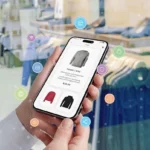Customer Lifetime Value (CLV) represents the total revenue a business can expect from a single customer over the duration of their relationship. Prioritizing CLV is essential for businesses aiming to achieve sustainable growth and profitability. By focusing on retaining existing customers and maximizing their value, companies can reduce acquisition costs and enhance overall revenue.
Understanding the Importance of CLV
CLV serves as a critical metric that helps businesses understand the long-term value of their customer relationships. A higher CLV indicates that customers are more valuable over time, allowing companies to invest more in acquisition and retention strategies. Benefits of focusing on CLV include increased revenue, improved customer loyalty, and more efficient marketing spend.
Current Trends in Customer Lifetime Value
Recent trends highlight a shift towards customer retention over acquisition, with businesses recognizing the cost-effectiveness of nurturing existing relationships. The integration of data analytics enables personalized customer experiences, fostering loyalty and repeat purchases. Additionally, there’s an emphasis on omnichannel engagement strategies, ensuring consistent and seamless interactions across various platforms
Identifying Industry-Specific Pain Points
E-commerce Sector
- High cart abandonment rates due to complicated checkout processes or unexpected costs. Addressing this involves streamlining the checkout process, offering transparent pricing, and providing incentives like free shipping or discounts to encourage completion of purchases.
- Intense competition leading to price wars and challenges in differentiation. Businesses can counter this by focusing on unique value propositions, superior customer service, and exclusive product offerings.
- Difficulty in building brand loyalty in a crowded online marketplace. Loyalty programs, personalized marketing, and consistent engagement through multiple channels can help retain customers.
Digital Marketing Agencies
- High client turnover stemming from unmet expectations. Agencies must prioritize setting realistic goals, maintaining open communication, and regularly showcasing measurable results to clients.
- Challenges in demonstrating the return on investment for marketing efforts. Detailed analytics reports, case studies, and transparent performance tracking can help build client trust and satisfaction.
- Keeping up with the rapid evolution of digital marketing trends. Continuous learning, adopting new tools, and staying updated on industry changes are vital for success.
Mobile App Development Firms
- Retaining users post-download and encouraging consistent engagement. Strategies include push notifications, in-app rewards, and regular updates to enhance user experience.
- Finding effective monetization strategies without compromising user experience. Freemium models, subscription plans, and unobtrusive ads can balance revenue generation with user satisfaction.
- Maintaining user interest amidst numerous competing apps. Offering unique features, intuitive design, and personalized experiences can set an app apart.
Strategies to Increase CLV Across Industries
Enhancing Customer Experience
- Personalized interactions using data analytics to tailor experiences. Businesses can analyze purchase history, preferences, and browsing behavior to offer relevant recommendations and promotions.
- Effective feedback systems to foster trust and improve services. Regularly seeking customer opinions and acting on them demonstrates a commitment to continuous improvement.
- Offering exceptional customer support to address needs promptly. 24/7 support through chatbots, helplines, and responsive teams can significantly improve customer satisfaction.
Implementing Loyalty Programs
- Rewarding repeat purchases with exclusive benefits. Points-based systems or exclusive discounts encourage customers to return.
- Encouraging referrals through incentives. Providing rewards for referring friends or family can expand the customer base while retaining loyal users.
- Providing early or exclusive access to new offerings for loyal customers. This makes customers feel valued and strengthens their connection with the brand.
Cross-Selling and Upselling
- Recommending complementary products based on previous purchases. Suggesting items that complement what a customer has already bought increases basket size and satisfaction.
- Training sales teams to suggest relevant add-ons effectively. Sales professionals should understand customer needs to make appropriate recommendations.
- Utilizing AI tools to analyze behavior and suggest suitable options. Automated systems can identify patterns and personalize suggestions, enhancing the buying experience.
Optimizing Pricing Strategies
- Offering tiered pricing models to cater to different segments. Businesses can provide basic, premium, and enterprise packages to appeal to diverse customer needs.
- Implementing subscription models for recurring revenue. Subscriptions ensure consistent income and promote long-term customer relationships.
- Providing discounts for long-term commitments. Special pricing for annual subscriptions or bulk purchases can incentivize loyalty.
Leveraging Technology
- Using CRM systems to manage interactions and analyze data effectively. CRMs enable businesses to track customer journeys and identify opportunities for improvement.
- Employing marketing automation tools to streamline efforts. Automated email campaigns, reminders, and retargeting ads save time and enhance engagement.
- Incorporating AI to enhance customer interactions and predict behaviors. AI-powered chatbots, predictive analytics, and recommendation engines create a personalized and efficient customer experience.
Case Studies: Successful CLV Enhancement
E-commerce
- A retailer shifted its strategy to focus on acquiring high-value customers. This led to a 310% increase in CLV and a 20% decrease in acquisition costs. By targeting loyal, repeat buyers with tailored marketing campaigns, the brand optimized its spending and improved profitability.
Digital Marketing Agency
- An agency introduced client education programs, resulting in improved client retention and stronger relationships. By providing value-added training sessions and resources, they empowered clients to understand and appreciate the results of their campaigns.
Mobile App Development Firm
- A firm used in-app rewards to encourage engagement, boosting user retention and usage. These rewards included exclusive content, milestone badges, and loyalty bonuses, ensuring users felt appreciated and motivated to remain active.
Measuring and Monitoring CLV
Key Metrics to Track
- Repeat purchase rate to assess customer loyalty. A higher rate indicates successful retention strategies and satisfied customers.
- Average order value to understand spending habits. Monitoring trends in purchase amounts helps identify opportunities for upselling and cross-selling.
- Customer retention rate to gauge long-term engagement. Tracking how many customers continue to interact with the brand over time provides insights into loyalty.
Tools and Techniques
- Customer segmentation analysis to tailor strategies for different groups. Segmenting customers by demographics, preferences, and purchase behavior ensures targeted approaches.
- Predictive analytics for forecasting customer behaviors and potential value. Predicting trends and proactively addressing needs enhances customer satisfaction.
- CRM systems to store data and derive actionable insights. Comprehensive customer profiles enable personalized marketing and service delivery.
Best Practices to Sustain Growth in CLV
- Focus on building long-term relationships rather than short-term gains. Consistent, high-quality engagement ensures customer loyalty and advocacy.
- Adapt strategies based on market trends and customer feedback. Staying flexible and responsive ensures ongoing relevance and satisfaction.
- Train customer-facing teams to nurture strong connections. Well-trained teams can build trust, handle concerns effectively, and enhance the customer experience.
- Ensure all business efforts align with the needs of your target audience. Aligning services, products, and messaging with customer expectations drives loyalty and retention.
Bottomline
Focusing on Customer Lifetime Value is about creating meaningful, lasting relationships with customers. By addressing industry-specific challenges and implementing strategies like personalization, loyalty programs, and advanced analytics, businesses can enhance their CLV. This not only boosts revenue but also builds a loyal customer base that advocates for your brand.






